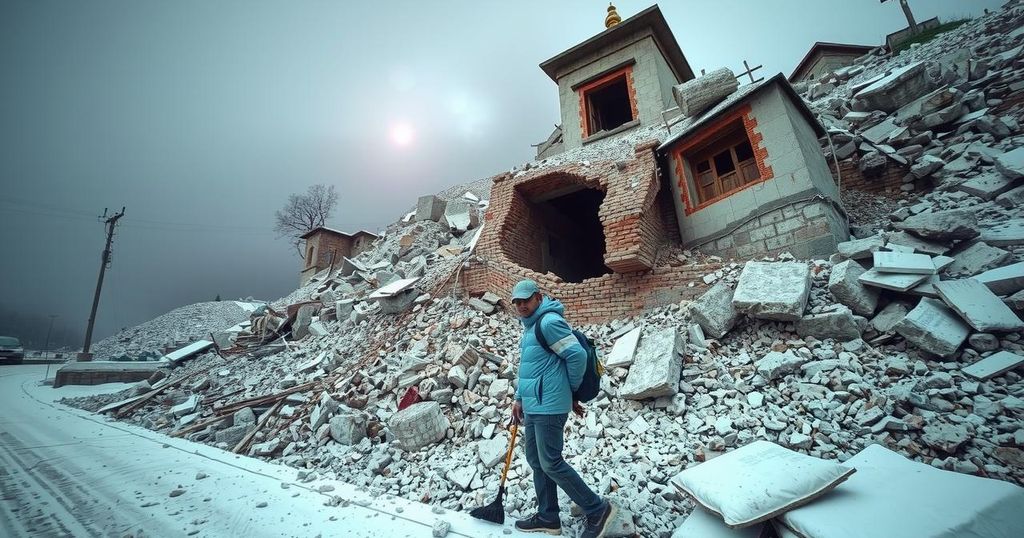A 7.1-magnitude earthquake hit Tibet, claiming at least 126 lives and injuring many, while wreaking havoc on infrastructure. Rescue operations are underway amid ongoing aftershocks, with significant government support for relief efforts.
On Tuesday, a powerful earthquake measuring 7.1 magnitude struck the Tibet region of western China and parts of Nepal, resulting in extensive destruction and loss of life. Initial reports indicate at least 126 fatalities, with many others injured and trapped beneath the debris of collapsed homes. The tremor produced substantial aftershocks, adding to the difficulties faced by rescue teams who are actively searching for survivors amid the rubble. Compelling footage released by the Ministry of Emergency Management depicts workers carrying individuals on stretchers across the fragmented landscape.
The Chinese state media has indicated that over 1,000 homes sustained major damage in the region, intensifying the humanitarian crisis. Furthermore, it was reported that approximately 188 individuals have been injured due to the quake. Residents in northeastern Nepal experienced the earthquake’s effects, prompting evacuations in affected areas, although there were no immediate reports of damages. The event occurred at a depth of approximately 10 kilometers, categorizing it as relatively shallow and thus exacerbating the destruction.
The epicenter of the earthquake was situated in Tingri County, a geologically unstable area where the Indian and Eurasian tectonic plates converge, a location notorious for seismic activity. After the initial quake, seismologists recorded about 150 aftershocks, prompting precautionary measures and closures in the Mount Everest vicinity. In response to the disaster, Chinese President Xi Jinping expressed the need for an exhaustive rescue operation and announced a significant allocation of resources for disaster relief, including the deployment of 3,000 rescuers to the affected area.
The average elevation of the impacted townships is approximately 4,200 meters, which complicates rescue operations. The rapidly evolving situation necessitates continuous monitoring and support for the affected population, who are now grappling with the aftermath of this natural disaster.
The recent earthquake in Tibet, measuring 7.1 on the Richter scale, has spurred widespread concern due to the severity of the destruction it caused. Located in a high-altitude region, Tibet is prone to seismic events because of the tectonic activity generated by the collision of the Indian and Eurasian plates. Such earthquakes not only pose immediate risks due to structural collapses but also complicate rescue efforts because of the challenging terrain and climatic conditions. The region, characterized by extreme elevation and sparse population, faces significant humanitarian challenges following the disaster, necessitating urgent assistance for the affected communities.
In summary, the earthquake that struck Tibet has resulted in tragic loss of life and significant injuries, with over 1,000 homes affected. Emergency services and governmental authorities are mobilizing resources to mitigate the impacts and restore safety in the region. The international community may play a crucial role in supporting rescue and recovery efforts, especially in light of the harsh environmental conditions that complicate response initiatives. Continuous monitoring of the situation is essential as aftershocks persist.
Original Source: www.marca.com






